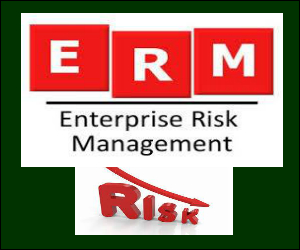
- Integration with Digital Transformation
As enterprises continue to evolve digitally, risk management is increasingly being integrated with digital transformation efforts. The adoption of technology-driven governance, risk, and compliance (GRC) solutions is becoming central to ERM strategies. This helps organizations to manage risks more effectively across their digital landscapes, aligning risk management with business processes and technology strategies. - Emphasis on Cybersecurity and Data Privacy
With cyber threats on the rise and the cost of cybercrime expected to reach staggering heights, organizations are prioritizing cybersecurity within their risk management frameworks. There is a focus on enhancing cyber risk optimization strategies, including the use of automation, analytics, and continuous monitoring to improve security and compliance outcomes. - Expansion of Risk Appetite Frameworks
The use of risk appetite statements to clarify how much risk an organization is prepared to accept has become more prevalent, especially in the financial sector. These frameworks help in communicating risk tolerance internally and externally, ensuring that all stakeholders are aligned on the acceptable levels of risk. - Advanced Risk Assessment and Mitigation Techniques
Modern ERM practices are not only about identifying risks but also proactively managing them. This includes the deployment of advanced analytical tools and techniques like AI and machine learning to predict and mitigate potential risks before they manifest into significant threats. - Third-Party Risk Management
As supply chains and business ecosystems become increasingly complex, the focus on managing third-party risks has intensified. Organizations are investing in systems that provide greater visibility and control over extended enterprise risks, encompassing not just direct partners but also fourth and fifth-party relationships. - Enhanced Focus on Non-Financial Risks (NFRs)
Organizations are increasingly recognizing the impact of non-financial risks, including operational disruptions, compliance lapses, and reputational damage. There is a growing trend towards quantifying these risks, employing sophisticated models to anticipate and mitigate potential impacts. - Simplifying GRC with Modern Cloud Platforms
The shift towards intuitive, cloud-based GRC platforms is simplifying the way organizations manage compliance and risks. These platforms enhance the accessibility and integration of risk management practices, making it easier for GRC teams to operate efficiently and respond swiftly to emerging risks.
Conclusion: The Role of ERM in Enterprise Growth
Effective ERM is crucial not only for managing risks but also for facilitating sustainable growth. By adopting these advanced strategies, organizations can protect themselves against a variety of threats while capitalizing on new opportunities in a risk-conscious manner. In a world where risks are interconnected and ever-evolving, robust ERM practices are indispensable for any enterprise aiming to thrive in 2024 and beyond.



